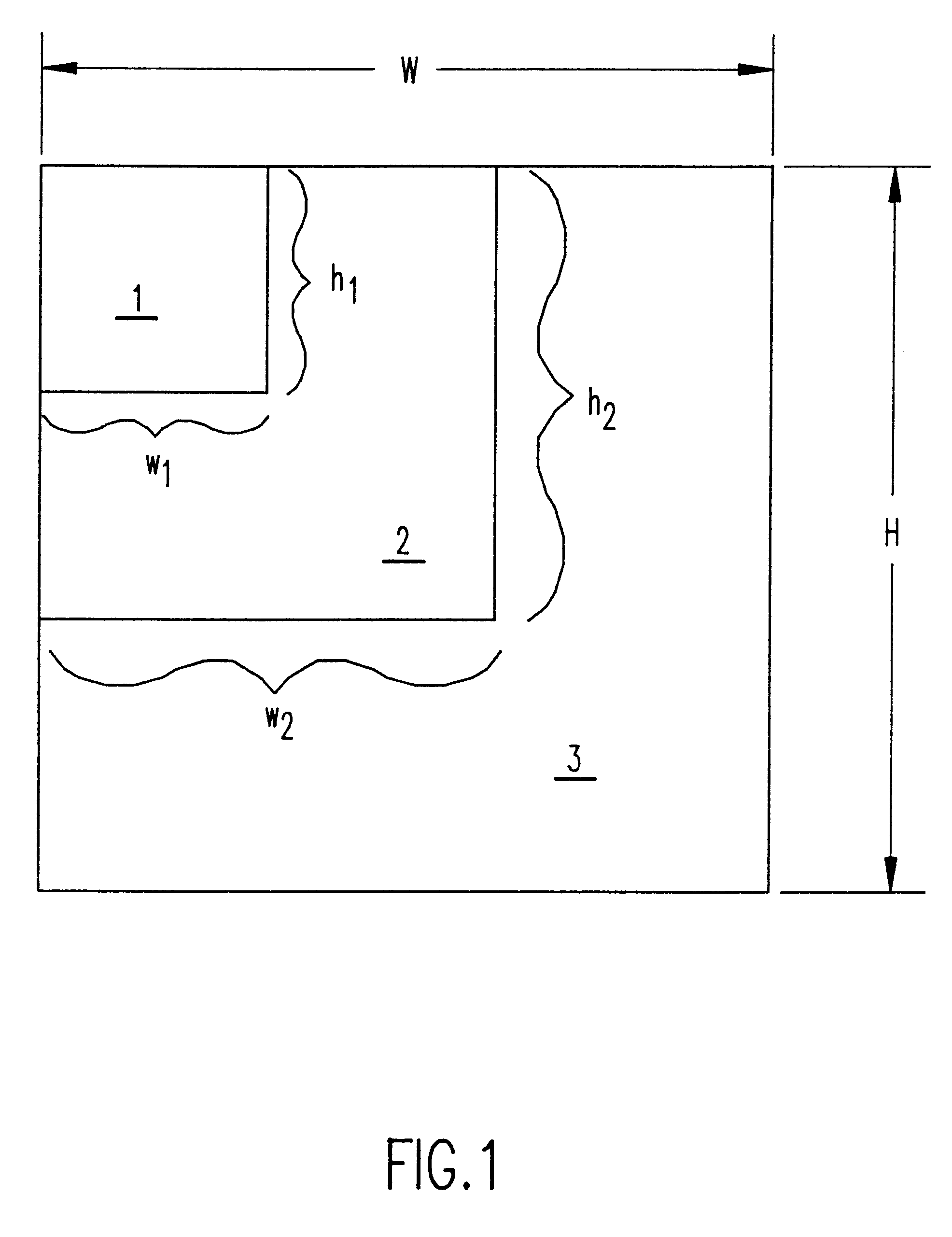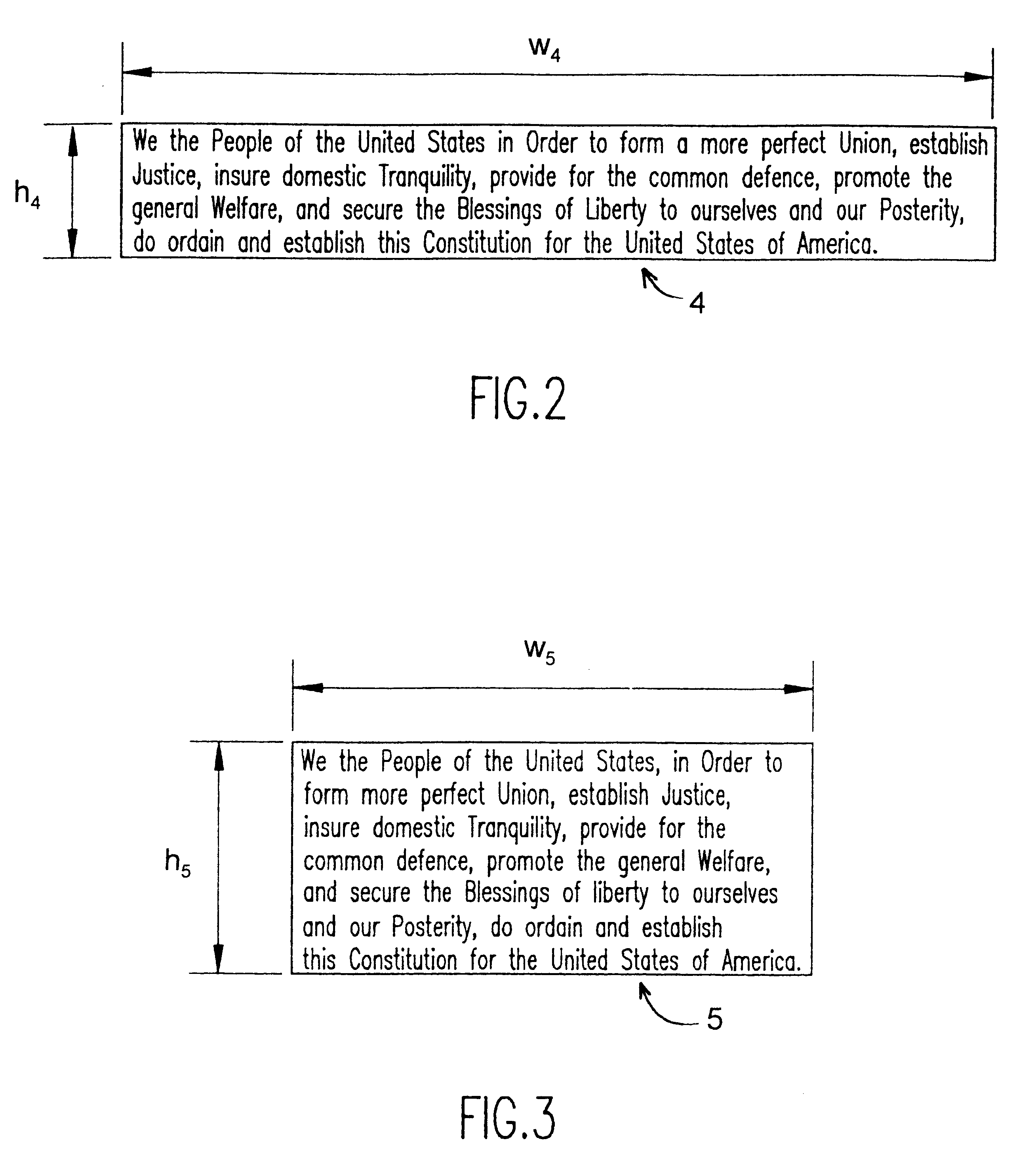Method for enabling adaptive sizing of display elements
- Summary
- Abstract
- Description
- Claims
- Application Information
AI Technical Summary
Benefits of technology
Problems solved by technology
Method used
Image
Examples
Embodiment Construction
Referring now to the drawings, and more particularly to FIG. 1, there is shown a diagram of the size queries typically answered by elements in the state of the art. An element will typically answer for its minimum dimensions represented in box 1 as h.sub.1 by w.sub.1, its preferred dimensions represented by box 2 as h.sub.2 by w.sub.2, and its maximum dimensions represented by box 3 as H by W. The element reports these dimensions in the form of height h and width w, giving a range of vertical sizing dimension h.sub.1 to H, and a range of horizontal sizing dimension w.sub.1 to W.
FIGS. 2 and 3 illustrate that for many elements the preferred width and height are not independent. FIG. 2 shows the preferred size of a wide or short element 4. Note that the display element 4 constitutes the box surrounding the text and not just the textual characters themselves. In other words, when the layout manager makes room for the display element on a given display, it must accommodate the size of th...
PUM
 Login to View More
Login to View More Abstract
Description
Claims
Application Information
 Login to View More
Login to View More - R&D
- Intellectual Property
- Life Sciences
- Materials
- Tech Scout
- Unparalleled Data Quality
- Higher Quality Content
- 60% Fewer Hallucinations
Browse by: Latest US Patents, China's latest patents, Technical Efficacy Thesaurus, Application Domain, Technology Topic, Popular Technical Reports.
© 2025 PatSnap. All rights reserved.Legal|Privacy policy|Modern Slavery Act Transparency Statement|Sitemap|About US| Contact US: help@patsnap.com



